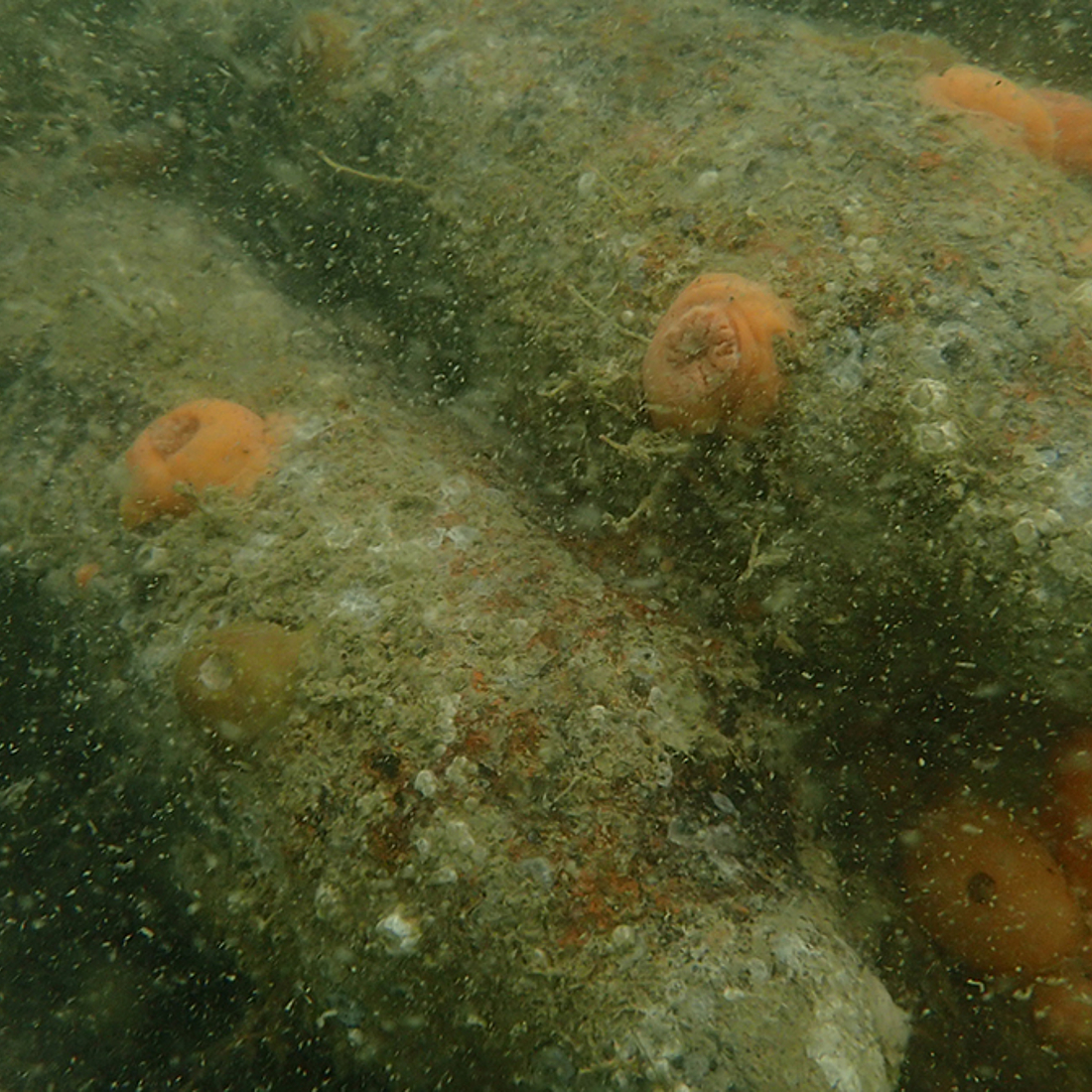The legacy of two world wars
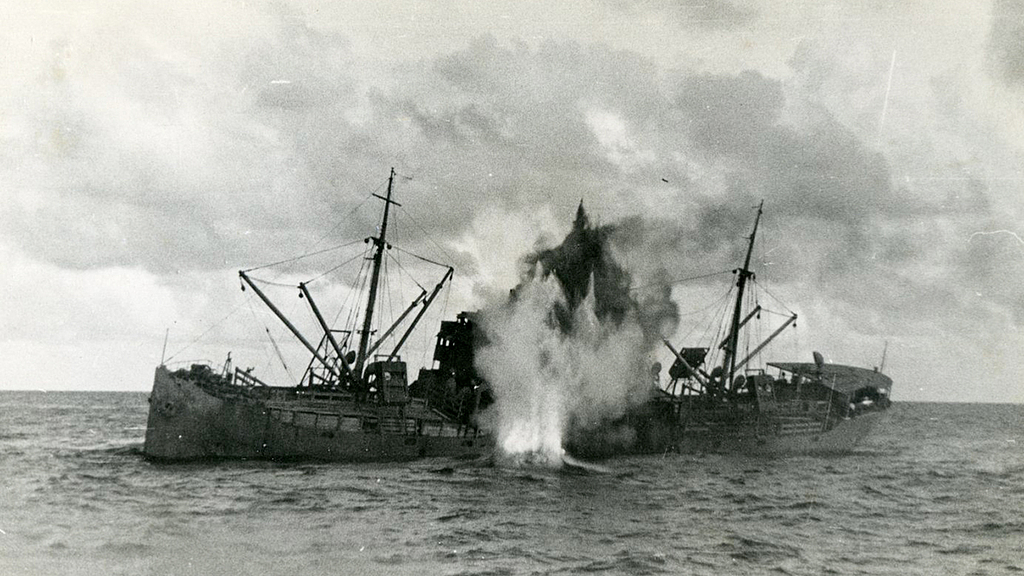
A ship is sunk during World War II. © Photo Archive, German Maritime Museum
The two World Wars started by Germany still leave their traces in the North Sea today, through sunken warships and the munitions that sank with them.
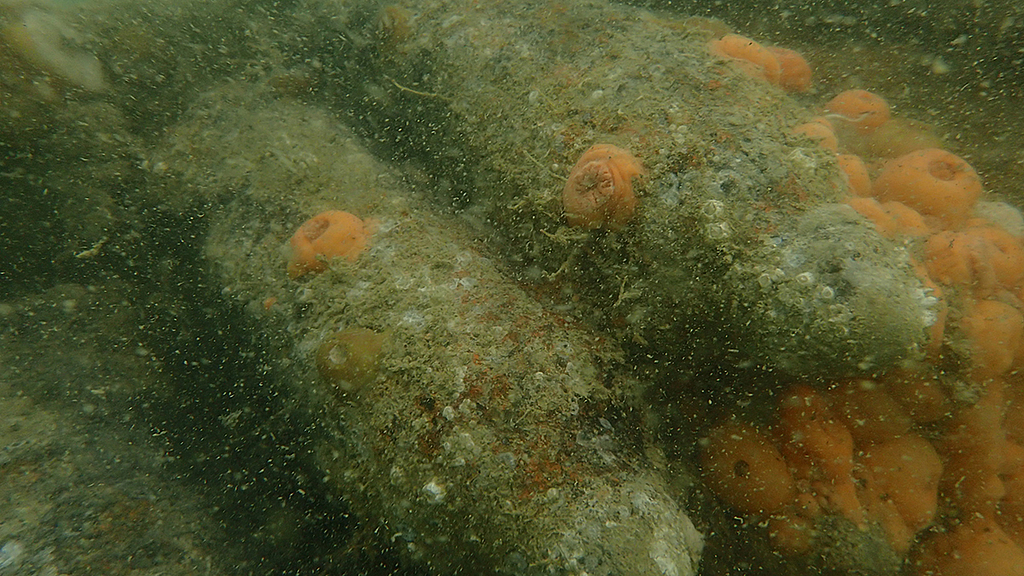
Pile of 120 mm grenades on the wreck of the British destroyer HMS BASILISK, sunk by German aircraft in 1940 © Vlaams Instituut voor de Zee
Grenades, torpedoes and mines from battles fought in World War I (1914-1918) and World War II (1939-1945) still lie on the seabed today. Further munitions were deliberately dumped at sea.
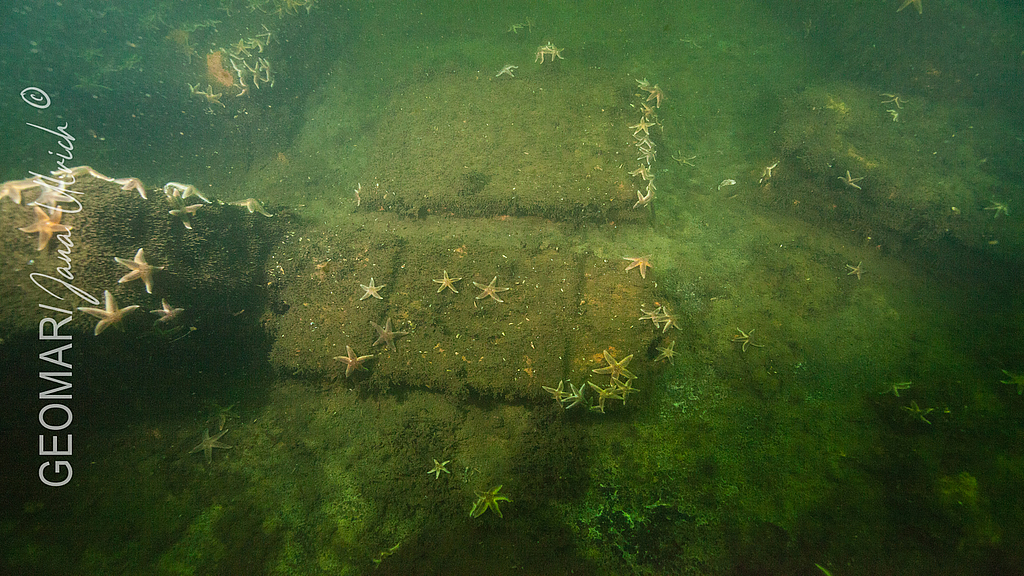
Dumped Ammunition boxes. Neustaedter Bucht/Baltic Sea. © Jana Ulrich / Geomar
This dumping was viewed as an easy way to dispose of leftover munitions, the sea serving as a final resting place where explosive material could no longer pose a threat. That is why many areas of the North Sea are littered with munitions.
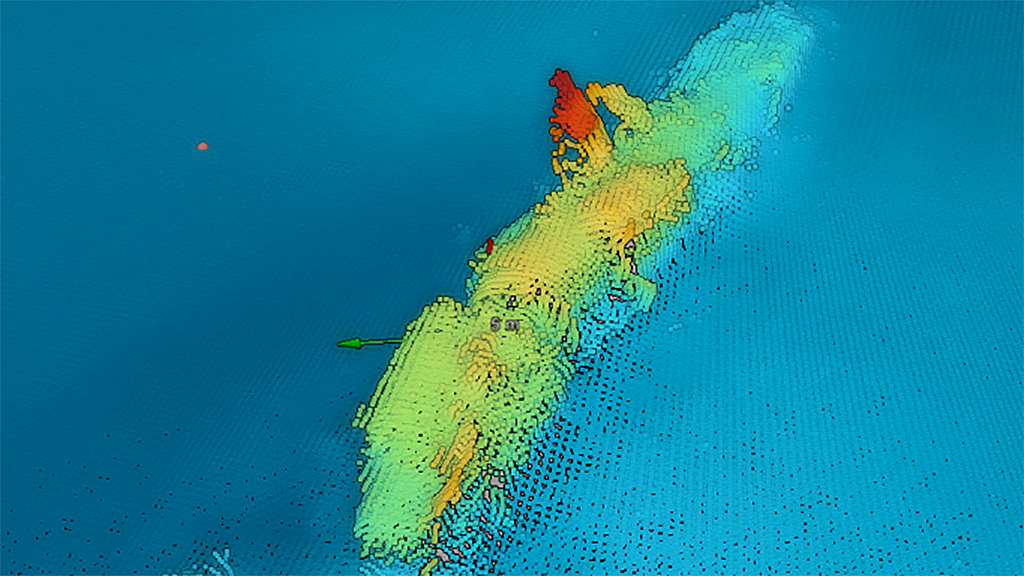
Multibeam scan of the wreckage of the German submarine SM UC 30, which went down in a minefield in 1917 © SeisLab Aarhus, Department of Geoscience, Aarhus University
Until now, little has been known about the state of the wrecks and weapons that lie on the seabed. With our North Sea Wrecks project, we are investigating the condition of these wrecks and munitions and assessing whether hazardous substances have leaked out.
Partner
-

